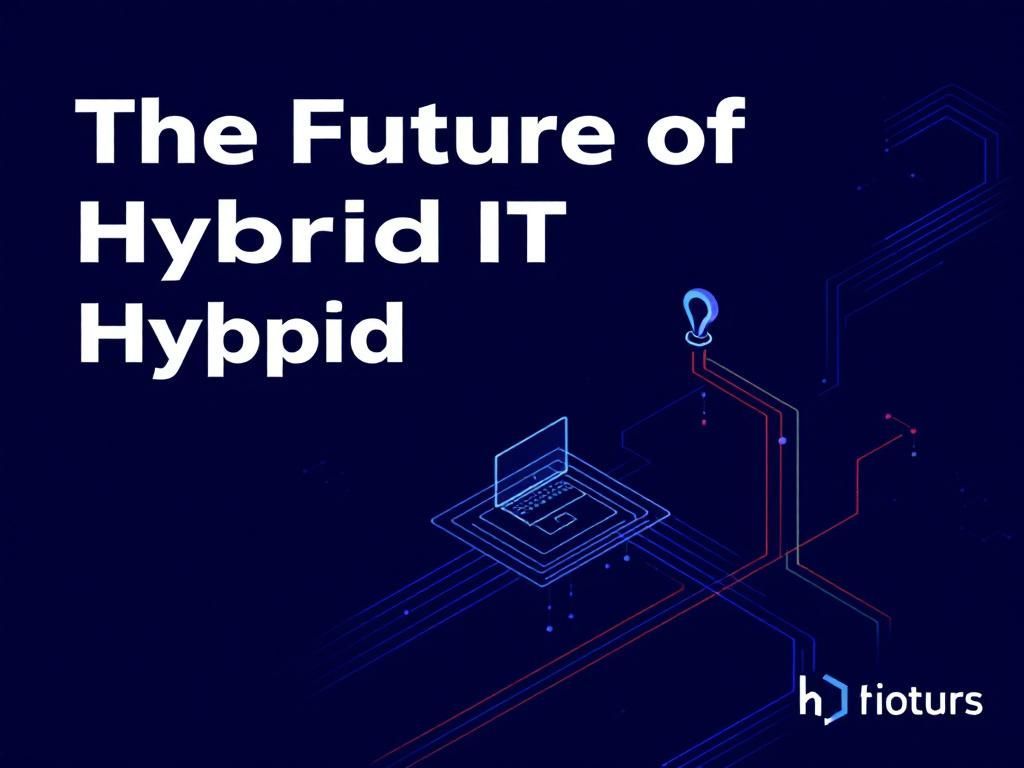Mastering Hybrid IT Support for 2025
Discover essential strategies and tools for mastering Hybrid IT support as we approach 2025, ensuring seamless integration and efficiency.

As organizations evolve and adapt to the rapid pace of technological advancements, the concept of Hybrid IT Support has gained significant traction. By combining on-premises infrastructure with public and private cloud services, businesses can achieve enhanced flexibility, scalability, and efficiency. This article explores the essential components, trends, and best practices for mastering Hybrid IT Support as we move towards 2025.
Table of Contents
Understanding Hybrid IT Support
Hybrid IT Support is a blend of traditional IT services and cloud-based resources, enabling organizations to optimize their IT capabilities. This model allows businesses to leverage the strengths of both on-premises and cloud environments, maximizing their operational efficiency.
What is Hybrid IT?
At its core, Hybrid IT refers to the combination of on-premises infrastructure, private clouds, and public clouds. This approach allows enterprises to:
- Scale resources quickly based on demand
- Optimize costs by utilizing cloud services for variable workloads
- Maintain data security and compliance through private infrastructures
Key Components of Hybrid IT Support
To effectively implement Hybrid IT Support, organizations must focus on several key components:
- Infrastructure: A mix of on-premises servers, networks, and storage solutions.
- Cloud Services: Utilizing public and private cloud platforms to enhance flexibility.
- Management Tools: Centralized management platforms to oversee diverse environments.
- Security Protocols: Robust security measures to protect data across infrastructures.
Benefits of Hybrid IT Support
Adopting Hybrid IT Support comes with numerous advantages for organizations:
1. Flexibility and Scalability
With Hybrid IT Support, businesses can easily scale their resources up or down based on demand. During peak operations, organizations can leverage cloud services without investing heavily in on-premises infrastructure.
2. Cost Efficiency
Organizations can optimize their IT spending by balancing workloads between on-premises and cloud environments. This efficiency helps in:
- Reducing capital expenditures
- Minimizing operational costs
3. Enhanced Security
By maintaining sensitive data on-premises while utilizing the cloud for less critical applications, organizations can better manage their security posture. This dual approach helps in compliance with regulations.
4. Improved Performance
Hybrid IT infrastructure can enhance performance by directing workloads to the most suitable environment. For instance, latency-sensitive applications can run on-premises, while batch processing can be shifted to the cloud.
Challenges of Implementing Hybrid IT Support
Despite its benefits, several challenges may arise when implementing Hybrid IT Support:
1. Complexity in Management
Managing a hybrid environment can be complex, requiring specialized skills and tools. Organizations need to invest in centralized management systems to streamline operations.
2. Security Concerns
With multiple points of access, security can be more difficult to manage. Implementing comprehensive security measures is critical for protecting data across different environments.
3. Integration Issues
Integrating existing systems with cloud services can pose significant challenges. Organizations must ensure compatibility and establish seamless connectivity between environments.
Best Practices for Mastering Hybrid IT Support
To navigate the complexities of Hybrid IT Support, organizations can follow these best practices:
1. Develop a Clear Strategy
Establish a clear roadmap for how Hybrid IT will be implemented in your organization. Consider factors such as:
- Workload distribution
- Cost management
- Compliance requirements
2. Invest in Training and Development
Provide training for IT staff to ensure they have the necessary skills to manage hybrid environments effectively. This includes:
| Skill Set | Importance |
|---|---|
| Cloud Management | High |
| Networking | Medium |
| Security Protocols | High |
| Data Management | Medium |
3. Implement Strong Security Measures
Prioritize robust security protocols to protect data from breaches. This includes:
- Encryption of sensitive data
- Multi-factor authentication (MFA)
- Regular security audits
4. Leverage Multi-Cloud Solutions
Diversification is key in Hybrid IT Support. Utilize multiple cloud service providers to avoid vendor lock-in and enhance redundancy.
Future Trends in Hybrid IT Support
As we look towards 2025, several trends are expected to shape the future of Hybrid IT Support:
1. Increased Adoption of Artificial Intelligence
AI will play a crucial role in automating management tasks and optimizing resource allocation within Hybrid IT environments.
2. Focus on Sustainability
Organizations will prioritize sustainable IT practices, including energy-efficient data centers and green cloud services.
3. Enhanced Data Privacy Regulations
As data privacy concerns grow, organizations will need to adapt to stricter regulations governing data storage and processing.
Conclusion
Mastering Hybrid IT Support is essential for organizations aiming to thrive in the digital landscape of 2025. By understanding its components, benefits, and challenges, businesses can strategically implement this model to enhance their operational efficiency and agility. As technology continues to evolve, staying ahead of trends and best practices will ensure that organizations can harness the full potential of Hybrid IT.
FAQ
What is Hybrid IT Support?
Hybrid IT Support is a combination of on-premises and cloud-based IT services, allowing businesses to leverage the benefits of both environments for optimal performance and flexibility.
What are the benefits of Hybrid IT Support for businesses?
Hybrid IT Support offers increased scalability, cost efficiency, improved disaster recovery, and the ability to manage workloads across different environments seamlessly.
How can organizations prepare for Hybrid IT Support in 2025?
Organizations can prepare by assessing their current IT infrastructure, investing in training for staff, and adopting tools that facilitate integration between cloud and on-premises solutions.
What challenges might arise with Hybrid IT Support?
Challenges may include data security concerns, complexity of management, and potential integration issues between different systems and platforms.
How does Hybrid IT Support improve disaster recovery?
Hybrid IT Support enhances disaster recovery by enabling organizations to back up data in multiple locations, ensuring greater resilience and quicker recovery times in case of failures.
What role does automation play in Hybrid IT Support?
Automation plays a crucial role in Hybrid IT Support by streamlining processes, reducing the risk of human error, and improving overall efficiency in managing IT resources across different environments.








